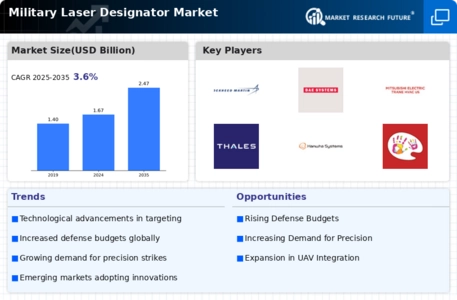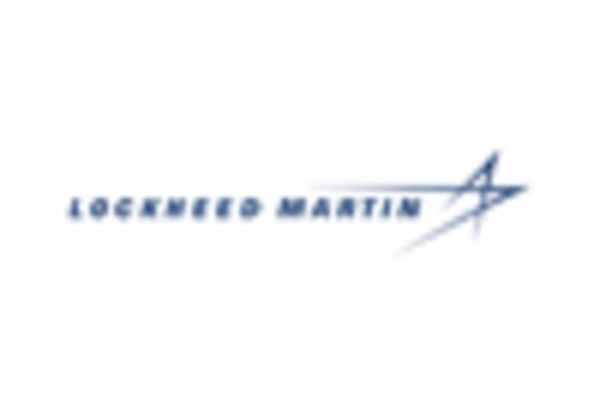Technological Innovations
Technological innovations are a key driver in the Military Laser Designator Market. The continuous development of advanced laser technologies, such as solid-state lasers and fiber lasers, is enhancing the performance and reliability of laser designators. These innovations are not only improving targeting accuracy but also increasing the operational range of these systems. Furthermore, the integration of artificial intelligence and machine learning into laser designators is expected to revolutionize targeting processes, making them more efficient and effective. As these technologies mature, they are likely to attract significant investments, thereby stimulating market growth and expanding the capabilities of military forces.
Increasing Defense Budgets
The Military Laser Designator Market is experiencing a notable surge due to increasing defense budgets across various nations. Governments are allocating more resources to modernize their military capabilities, which includes investing in advanced targeting systems. For instance, countries like the United States and India have significantly increased their defense spending, with projections indicating a rise to over 2 trillion USD collectively by 2026. This financial commitment is likely to enhance the procurement of sophisticated military technologies, including laser designators, which are essential for precision strikes and effective combat operations. As nations prioritize military readiness, the demand for high-performance laser designators is expected to grow, thereby driving the market forward.
Geopolitical Tensions and Conflicts
Geopolitical tensions and conflicts are a significant driver of the Military Laser Designator Market. Ongoing conflicts in various regions, coupled with rising tensions among nations, are prompting military forces to enhance their operational capabilities. Countries are increasingly investing in advanced technologies, including laser designators, to ensure they maintain a strategic advantage. For example, the ongoing military developments in Eastern Europe and the Asia-Pacific region have led to heightened defense activities, resulting in increased procurement of advanced targeting systems. This environment of uncertainty and competition is likely to sustain demand for military laser designators, as nations seek to bolster their defense capabilities in response to evolving threats.
Rising Demand for Precision Warfare
The Military Laser Designator Market is being propelled by the rising demand for precision warfare capabilities. As military operations evolve, there is a growing emphasis on minimizing collateral damage while maximizing operational effectiveness. Laser designators play a crucial role in achieving this objective by enabling accurate targeting of enemy assets. Reports suggest that the market for precision-guided munitions is projected to reach approximately 40 billion USD by 2027, indicating a robust growth trajectory. This trend underscores the necessity for advanced laser designators that can enhance the accuracy of airstrikes and ground operations, thus fostering a favorable environment for market expansion.
Integration with Advanced Weapon Systems
The integration of military laser designators with advanced weapon systems is significantly influencing the Military Laser Designator Market. As armed forces adopt more sophisticated platforms, such as unmanned aerial vehicles (UAVs) and precision-guided munitions, the need for compatible laser designators becomes paramount. This integration enhances the overall effectiveness of military operations by ensuring that laser designators can seamlessly communicate with various weapon systems. The market for UAVs alone is anticipated to exceed 50 billion USD by 2026, indicating a substantial opportunity for laser designator manufacturers to align their products with these emerging technologies. This trend is likely to drive demand for innovative laser designators that can operate effectively within integrated combat environments.

















Leave a Comment